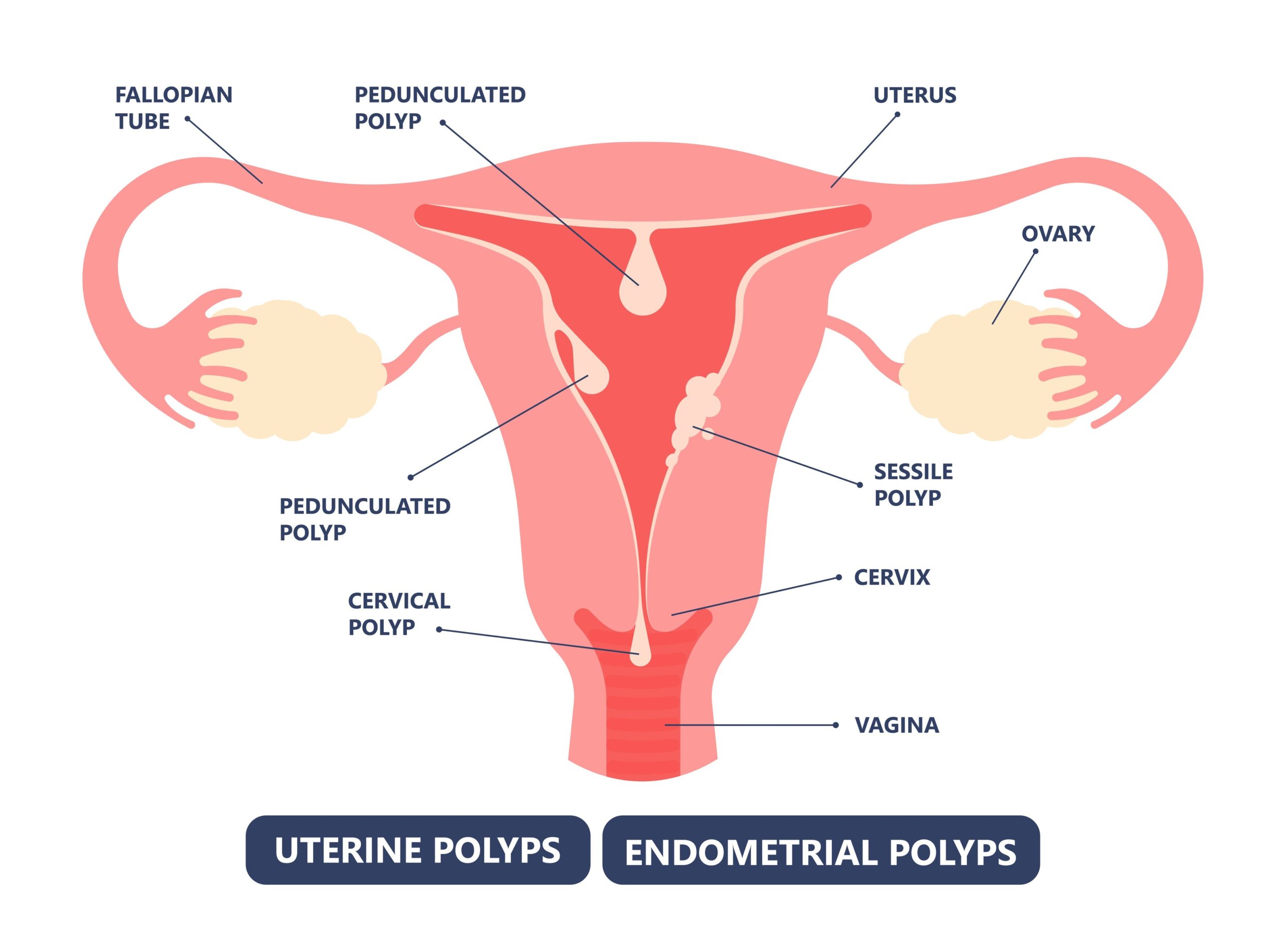Uterine polyps are growths that develop within the inner lining of the uterus, also known as the endometrium. These polyps are usually non-cancerous, but they can lead to various symptoms and complications. Uterine polyps can vary in size, ranging from small, barely noticeable growths to larger masses. Here’s what you need to know about uterine polyps:

Causes and Risk Factors:
The exact cause of uterine polyps is not fully understood, but certain factors may contribute to their development:
Hormonal Imbalances: Fluctuations in hormone levels, particularly estrogen, can promote the growth of Polyps.
Chronic Inflammation: Conditions that cause chronic inflammation of the endometrium may increase the risk of polyp formation.
Age: Polyps are more common in women during their reproductive years, but they can occur at any age.
Medications: Long-term use of tamoxifen, a medication used to treat breast cancer, may increase the risk of developing polyps.
Symptoms:
Many women may not experience any symptoms, but when symptoms do occur, they can include:
Abnormal Uterine Bleeding: The most common symptom is irregular or heavy menstrual bleeding. This can include heavy periods, bleeding between periods (intermenstrual bleeding), bleeding after sexual activity, and bleeding after menopause.
Pelvic Pain: Some women may experience pelvic discomfort or pain, particularly if the polyps are large or cause irritation.
Infertility: Uterine polyps can interfere with embryo implantation, potentially leading to fertility issues.
Diagnosis and Treatment Of Uterine Polyps:
Pelvic Examination: A healthcare provider may detect uterine polyps during a routine pelvic examination.
Ultrasound: Imaging tests like transvaginal ultrasound can help visualize the uterus and identify the presence of polyps.
Hysteroscopy: A hysteroscope, a thin tube with a camera, is inserted into the uterus to directly visualize and potentially remove polyps.
Biopsy: A small tissue sample may be collected during hysteroscopy to rule out the presence of cancer.
Treatment Options For Uterine Polyps:
Treatment depends on the severity of symptoms and the patient’s reproductive plans. Options include:
Watchful Waiting: If polyps are small and not causing symptoms, a healthcare provider may recommend monitoring without treatment.
Hysteroscopic Polypectomy: This procedure involves the removal of uterine polyps using a hysteroscope inserted through the vagina and cervix. It is typically an outpatient procedure.
Hormonal Therapy: Hormonal medications, such as birth control pills or progestins, can help regulate the menstrual cycle and reduce polyp growth.
Surgical Removal: In cases of large or multiple polyps, surgical removal may be recommended.
Prevention
There is no guaranteed way to prevent uterine polyps, but maintaining a healthy lifestyle and managing hormonal imbalances can potentially reduce the risk.
If you’re experiencing abnormal uterine bleeding, pelvic pain, or other symptoms, it’s important to consult a healthcare provider. They can diagnose the underlying cause of your symptoms and recommend appropriate treatment options based on your individual situation.


